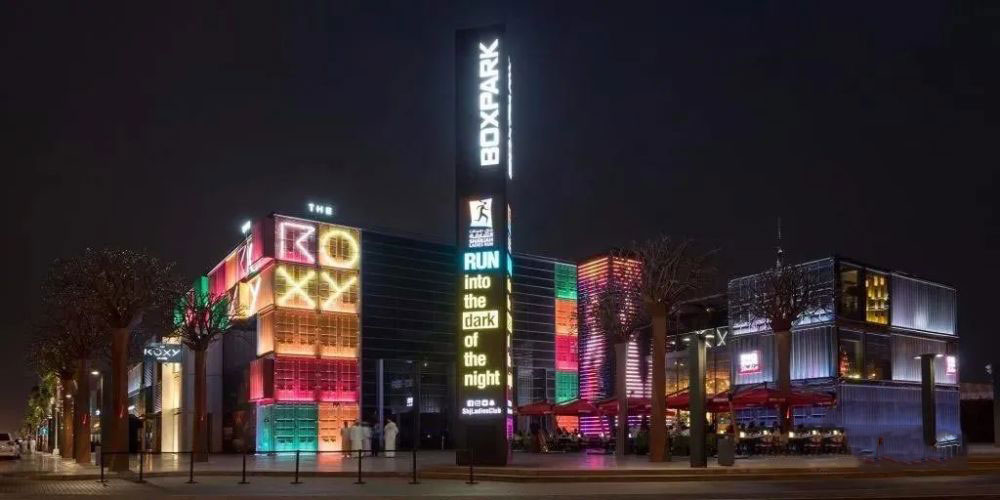The container house is a prefabricated modular building with a container steel structure as the main body. All modular units are both structural units and spatial units. They have independent support structures that do not depend on the outside. The interior of the modules is divided into different spaces according to functional requirements. Container houses have the characteristics of industrialized production, convenient transportation, convenient disassembly and assembly, and reusability, and have been used all over the world. As one of the great innovations in the history of architecture in the past century, the container house is listed by the American “Business Weekly” as one of the 20 important inventions that are most likely to change the way of life of human beings in the next 10 years, which is causing more and more attention from container manufacturers. Pay attention and practice actively.
1 Macro environment for the development of container houses
The external environment of an enterprise is divided into a micro-environment and a macro-environment: the micro-environment refers to the specific environment for the survival and development of an enterprise, that is, the industrial environment and market competition environment that directly affect the production and operation activities of an enterprise. , consumers and other factors, the influence of these factors is more specific, container manufacturing enterprises are easier to grasp; the macro environment refers to the environment in which the production and operation activities of enterprises are located, including political environment, legal environment, economic environment, social and cultural environment, technological environment , Environmental factors and emergencies, etc. These factors always act on the market first, and then indirectly affect the enterprise. They are beyond the control of the enterprise. It is not easy for container manufacturing enterprises to accurately grasp it. Therefore, it is particularly important to analyze the impact of the current macro environment on the development of container houses.
1.1 Political environment
Globalization promotes the major adjustment of the international economic structure, further accelerates the reorganization and flow of production factors on a global scale, and the export and transfer of manufacturing industries by developed countries provides important strategic opportunities for my country’s economic development. play a more important role. In the 2008 Government Work Report, “promote economic restructuring, change the mode of development, resolutely control blind investment and redundant construction in industries with high energy consumption, high emissions, and overcapacity, and increase the access standards and project capital ratios for industries that restrict development.” The content of “points out the development direction for the production and operation activities of the enterprise. As a high-tech, high-value-added container derivative product, container houses provide practical opportunities for the container industry to adjust product structure, improve capacity utilization, lay a solid foundation for long-term development, and achieve sustainable development.
1.2 Legal environment
1.2.1 Energy saving factors
Since the world energy crisis occurred in 1973, countries have put building energy conservation as the focus of energy conservation work, and successively formulated and implemented a series of building energy conservation regulations and standards.
The U.S. government promulgated the “Energy Conservation Regulations in New Building Structures” in December 1977, and formulated the “National Appliance Energy Conservation Act” to implement minimum energy efficiency standards for buildings and household appliances. These standards have been continuously revised and become more stringent. In addition, in economically developed regions such as California and New York, building energy efficiency standards are stricter than those of the federal government.
The Energy Performance of Buildings Directive (EPBD) became a mandatory legal document of the European Union in January 2003 and is the most important framework policy document for building energy conservation in the European Union. Since EPBD came into force, EU member states have formulated or improved building energy-saving regulations according to the requirements of EPBD and combined with their own specific conditions. Then save energy by 25%~30%; �Germany implemented new building energy-saving regulations in April 2006. This regulation elaborates on the implementation requirements of EPBD in all aspects, and stipulates minimum energy consumption requirements for the shape coefficient of various buildings.
Since the 1980s, my country has successively promulgated building energy-saving policies and building energy-saving standards, such as JGJ26-1995 “Civil Building Energy-Saving Design Standards (Heating Residential Buildings)”, JGJ134-2001 “Residential Building Energy Conservation in Hot Summer and Cold Winter Areas”. Design Standards”, JGJ75-2003 “Design Standards for Energy Conservation of Residential Buildings in Hot Summer and Warm Winter Areas”, GB50189-2005 “Design Standards for Energy Conservation of Public Buildings” etc.; system.
1.2.2 Electrical safety factors
Electrical safety is not only related to personal safety, but also related to the safety of buildings, electrical equipment and other property and the normal function of electrical devices. Many developed countries have attached great importance to electrical safety issues and formulated special electrical safety regulations. “Electrical Regulations” and “Low Voltage Directive” of the European Union, etc. These electrical safety regulations have played a good role in protecting personal safety and preventing electrical fires.
The “National Electrical Code” of the United States fully embodies the “people-oriented” electrical safety principle. It clearly states on its homepage: “The purpose of this regulation is to provide safety protection for people and property, and to avoid the dangers caused by the use of electricity.” According to the latest technology and industry needs, the National Fire Protection Association of the United States revises the National Electrical Code every three years, so that this most important document in the field of electrical safety in the United States has strict and detailed regulations, rigorous text, and strong reliability. Operability, and maintain the advanced nature of standards and specifications from the beginning to the end, enjoying a high reputation in the world.
Due to historical reasons, the formulation of my country’s electrical safety regulations refers to the standards of the former Soviet Union’s “Electrical Installation Regulations”, which only emphasizes the protection of equipment and lacks the concept of “people-oriented”. , Some provisions have problems such as ambiguity, contradictions, and difficulty in implementation, and the revision cycle is long, which no longer meets the needs of the current rapid social and economic development. Therefore, compared with developed countries, there is still a big gap in my country’s electrical safety regulations.
1.3 Economic environment
In the post-financial crisis era, the global economy is rebalancing at the cost of low-speed growth, the global consumption and international trade market space is relatively limited, and the market competition is more intense; developed countries re-emphasize production, manufacturing and export, and the economic growth model has shifted to “re-industrialization” , not only shrinks the market space of developed countries, but also may compete with developing countries for the market. The contradiction of global economic rebalancing has induced increasingly serious trade protectionism, and the fields, scope and objects of trade frictions have become wider, posing severe challenges to the future development of world trade. Faced with such an economic situation, my country’s export-oriented container house manufacturing enterprises should adjust their business strategies in a timely manner, expand new export markets, and avoid excessive concentration of export markets; gradually change from low-cost competition strategy to differentiated competition strategy, and pay more attention to Independent research and development and innovation, enhance core competitiveness, and promote sustainable development of enterprises.
1.4 Social and cultural environment
1.4.1 Lifestyle changes
With the rapid development of science and technology, people’s lifestyles have undergone profound changes, which has inspired new thinking about their own living space. People’s requirements for housing are no longer limited to shelter from wind and rain, and new requirements such as comfort, environmental protection, energy saving, and ecology continue to emerge. It was proposed that a single traditional building model can no longer meet people’s individual needs, and container houses are a new idea, such as container student apartments in Amsterdam, the Netherlands, container economy hotels in London, England, and container cities in the dock area, and Naples, Italy. Container Puma franchise store, container nomadic museum in Tokyo, Japan, etc.
1.4.2 Impact of Demographic Structure
The global population pressure is further intensifying, highlighted by population growth in developing countries and population aging in developed countries. Consumers of different ages have obvious differences in consumption needs and behaviors. For young and old people with poor economic conditions, the object of housing consumption must be affordable housing. The distribution characteristics of American industrialized housing developed from RVs and the age of consumers illustrate this fact: American industrialized housing is mainly concentrated in the economically backward southern regions, and most of the buyers are low-income groups, mainly young and old . As a kind of industrialized housing, container houses have considerable development prospects among low-income groups, especially young people and the elderly.
1.5 Technical environment
The technological environment refers to the technological level, technological strength, technological policy and technological development trend in the social environment in which the enterprise is located. The technical environment of container houses includes both architectural science and technology and supporting technologies related to container transportation. The intersection of them constitutes the modular technology of container houses based on architectural science and technology.
The rapid development of modern science and technology, especially computer communication and network technology, has prompted a large number of modern equipment and high-tech achievements to be applied to buildings, and building intelligence is receiving extensive attention and research; two major worldwide problems, resource shortage and environmental degradation, promote With the development of buildings in the direction of protecting the natural environment, saving energy, and recycling resources. When container house manufacturers develop container house products, they must not only pay attention to container transportation technology, but also closely follow the technological level and development trend of the construction industry, keep abreast of the application of new construction technologies, new materials, and new processes, so that the development of container houses can keep pace with the development of container houses. The pace of changing times.
1.6 Environmental factors
At present, human society is facing serious challenges of energy shortage and environmental degradation. According to statistics, construction consumes nearly 50% of the world’s natural resources, construction waste accounts for 40% of the waste generated by human activities, and air pollution, light pollution, and electromagnetic pollution related to construction account for 34% of the overall environmental pollution. As the most important product of human civilization, architecture has become unsustainable in its traditional development model. To explore the sustainable development model of architecture, pursue the mutual coordination between economic and social development, resources and environment, and achieve the harmony between man and nature has become an architectural urgent need for industry development. In 1993, the 18th Congress of the International Association of Architects published the “Chicago Declaration” with the theme of “Architecture at the Crossroads-Building a Sustainable Future”, which pointed out that “architecture and its built environment play an important role in the impact of human beings on the natural environment.” Aspects play an important role; design in line with the principles of sustainable development requires comprehensive consideration of resource and energy efficiency, impact on health, and material selection.” Container houses embody the concepts of recycling resources, energy conservation and environmental protection, and are One of the ways to realize the sustainable development of buildings.
1.7 Emergencies
In recent years, disasters caused by earthquakes, volcanic eruptions and abnormal extreme weather have increased significantly. After the earthquake, once a large number of houses are destroyed, the victims will be displaced. The container houses have the characteristics of modular resettlement houses. There have been many successful experiences at home and abroad in quickly solving the living problems of the victims. There will be more and more demand for container houses as post-earthquake resettlement houses.
Post time: Nov-23-2022


